by Babak Taghvaee
These aging Polish-made crop dusters have been in use by the HAF's 359 Public Services Air Support Unit (MAEDY) in Tatoi airfield of Athens since 1983 and are now facing operational challenges in the mountainous regions of Greece. This is primarily due to their PZL Kalisz ASz-621R 9-cylinder air-cooled radial piston engine, 731 kW (980 hp), and secondarily due to their dependency on landing for refilling their water/retardant tank.
To replace them, the HAF has selected Air Tractor AT-802s to be acquired by the Greek government. Before their acquisition and delivery, civilian AT-802s are being chartered during every fire season, playing an important role in countering the increasing wildfires in the country. In this article, the author reviews their operations during the fire season of 2024.
41 Years of History
PZL began the design and development of the Dromader in the mid-1970s. Despite being an aircraft manufacturer from Poland, a member of the Warsaw Pact, PZL received help from Rockwell International, a US aircraft manufacturer that had produced the Rockwell Thrush Commander, one of the best agricultural aircraft of the 1970s. The key objective of PZL in co-developing the Dromader with an American company was to improve its sales worldwide by obtaining US FAA certifications for it.
The M-18 Dromader is one of the most successful agricultural aircraft ever built, with over 200 of them still flying around the world. The 21 examples in service with the Hellenic Air Force are the only military examples currently serving with 359 MAEDY at Tatoi airfield in Athens. Capable of carrying 2,500 L (660 US gal; 550 imp gal) of liquid or 2,200 kg (4,900 lb) of dry chemicals in a fiberglass hopper forward of the cockpit, the M-18Bs have been used for firefighting missions in less challenging regions, particularly non-mountainous areas of Greece, for over 40 years.
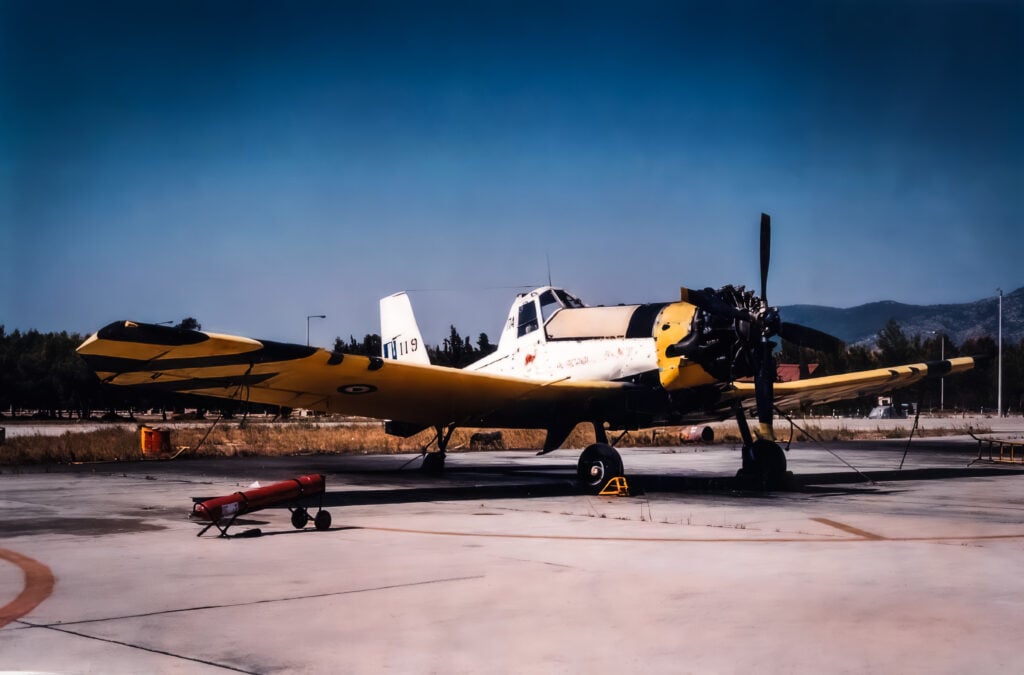
The 359th Civil Service Air Service Squadron (MAEDY), which was founded in March 1968, became the recipient of the M-18B Dromader when the first eight out of 30 ordered by Greece were delivered to the unit in March 1983. By the end of 1984, 22 more examples were delivered to the unit and were quickly put into use to battle wildfires across Greece. At the time, the unit operated Bell 47G-3B-2 and Bell 47G-5 light helicopters equipped with spraying equipment in its helicopter squadron. The unit also had another aircraft squadron that operated several Grumman G.164 AG-Cat biplane firefighters since 1974.
In May 1974, 359 MAEDY received ten G.164A Ag-Cats from Grumman, followed by 13 Super Ag-Cats (G.164G) in March 1976. They replaced the C-47A Dakota transport aircraft that had been equipped with spraying equipment in the unit. The Super Ag-Cat had a more powerful radial piston engine, the Pratt & Whitney R-1340-AN-1, capable of producing 525 hp. Thanks to the more powerful engine, it could carry 1,893 liters of water, which was relatively higher than the Normal Ag-Cat. Even after the delivery of the M-18Bs, the Ag-Cats and Super Ag-Cats were kept in service until 2011 when their last five airworthy examples with serial numbers 1265, 1280, 1548, 1586, and 1605 were retired.
Throughout its history, thirteen M-18Bs of HAF’s 359 MAEDY have experienced accidents and incidents, eleven of which led to the total loss of the aircraft. Twelve of these losses occurred while one aircraft was repaired.
Training of Dromader Pilots at 351 MAH
The Dromader pilots who fly with 359 MAEDY are trained at the 351 Aviation Applications Squadron (351 MAH) based in Tatoi airfield, Dekelia. The squadron is part of the 120th Air Training Wing of the HAF. In the past, when 359 MAEDY also operated Bell 47 helicopters and G.164A/G Ag-Cats, the 351 MAH had three companies, each responsible for training specific pilots for the three types of aircraft. Now, the squadron only trains Dromader pilots. In addition to training new pilots, the squadron is also responsible for maintaining the flying skills of the pilots currently serving at 359 MAEDY during the non-fire season, which starts from November until May of the following year.
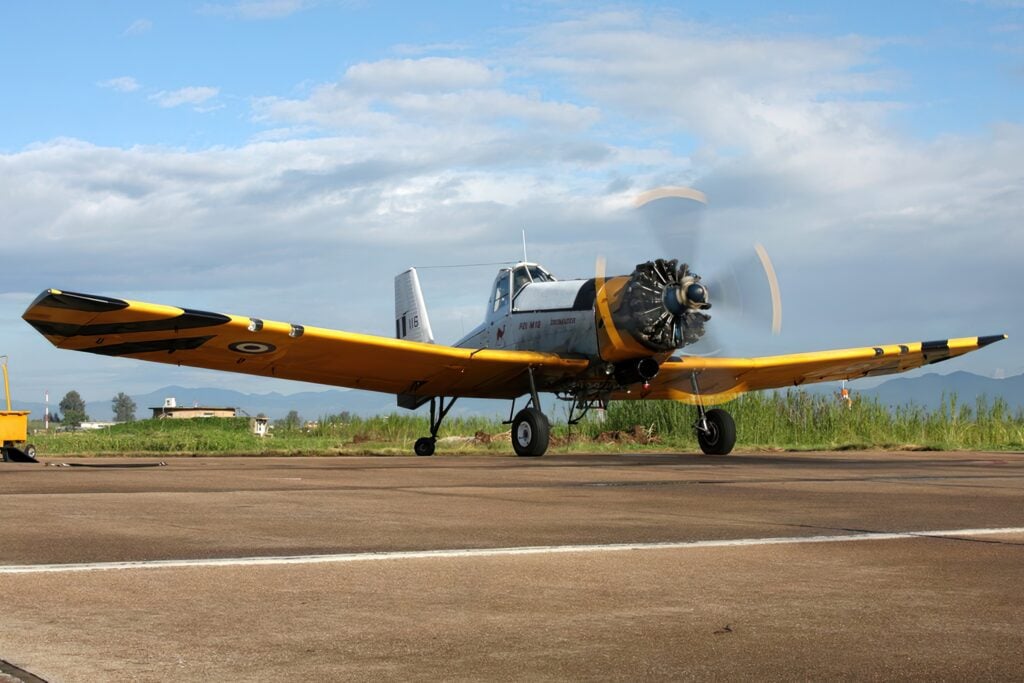
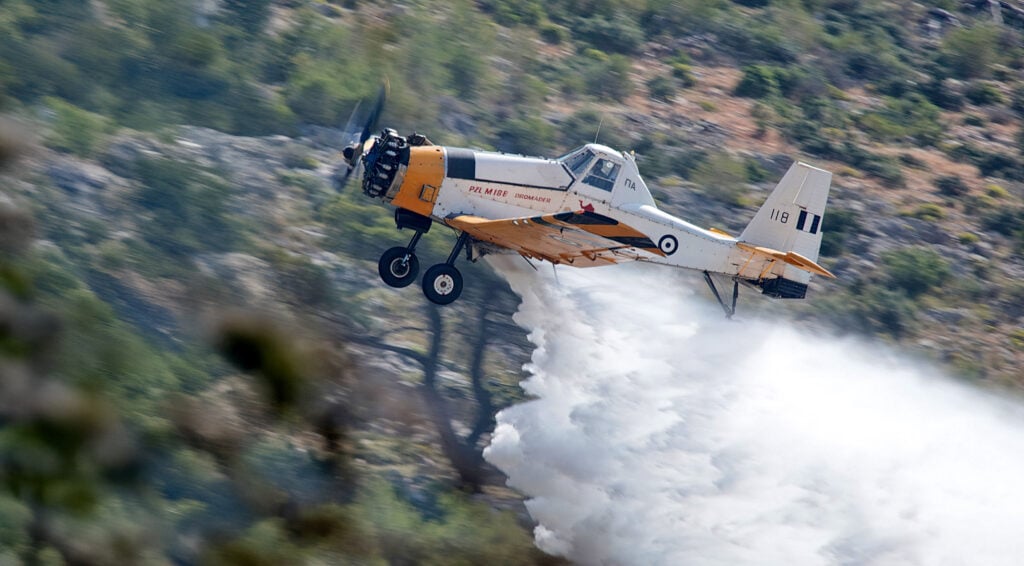
Dromader pilots can be categorized into three groups. The first group consists of permanent reserve officers who have been recalled and returned to active duty at the request of the General Staff of HAF. The second group of pilots are permanent officers of the air force who mostly serve in the 351 MAH as Instructor pilots. The third group consists of experienced civilian pilots, holders of a professional degree for crop-dusting and firefighting operations. The leadership of the squadrons (commander and operations officer) is always chosen from the ranks of active permanent officers.
In July 2002, three M-18BS training aircraft were purchased, dedicated to M-18B pilot training at 351 MAH. The M-18BS is also equipped with a water tank, which, compared to the M-18B, is smaller but useful for the trainee to practice water drops. After passing ground school, each student undergoes several hours of training on the M-18BS. They first practice dropping a small amount of water, and as they gain more experience, the amount of water carried and dropped gradually increases until they reach the maximum on the M-18B. After completing 40 hours of training on the M-18BS, students continue flying solo on the M-18B until they gain enough skill before joining 359 MAEDY.
Maintenance of the M-18B Fleet
The critical, albeit invisible, task of technical support for the 359 MAEDY's aircraft is assigned to the unit’s Aircraft Maintenance Squadron (MSA). The MSA of MAELY not only collects the technical equipment of the Unit but also its aircraft themselves. In addition to maintaining the aircraft, MSA is also in charge of servicing the flight line, taking care of servicing the aircraft that are preparing to depart for a flight, but also those that are returning from a mission.
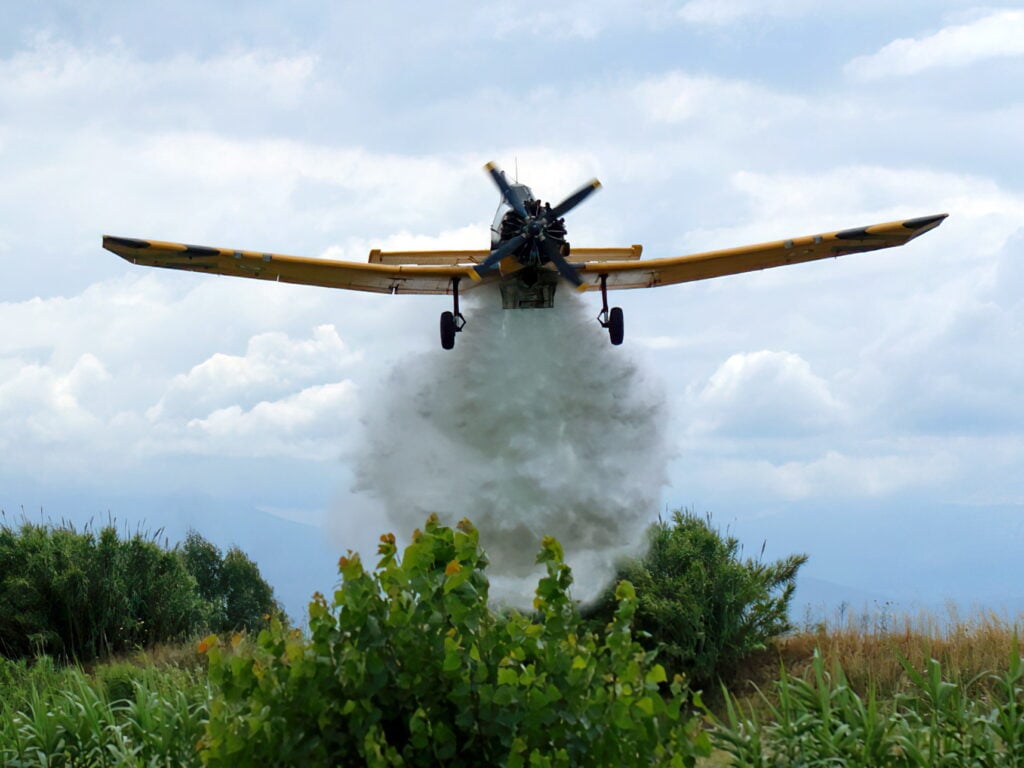
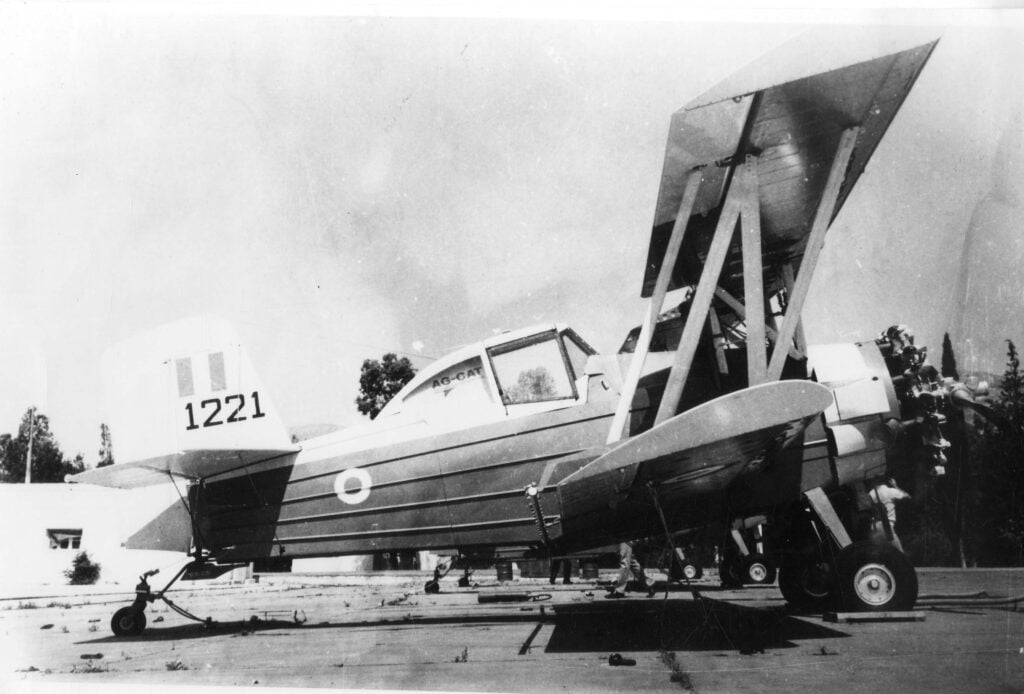
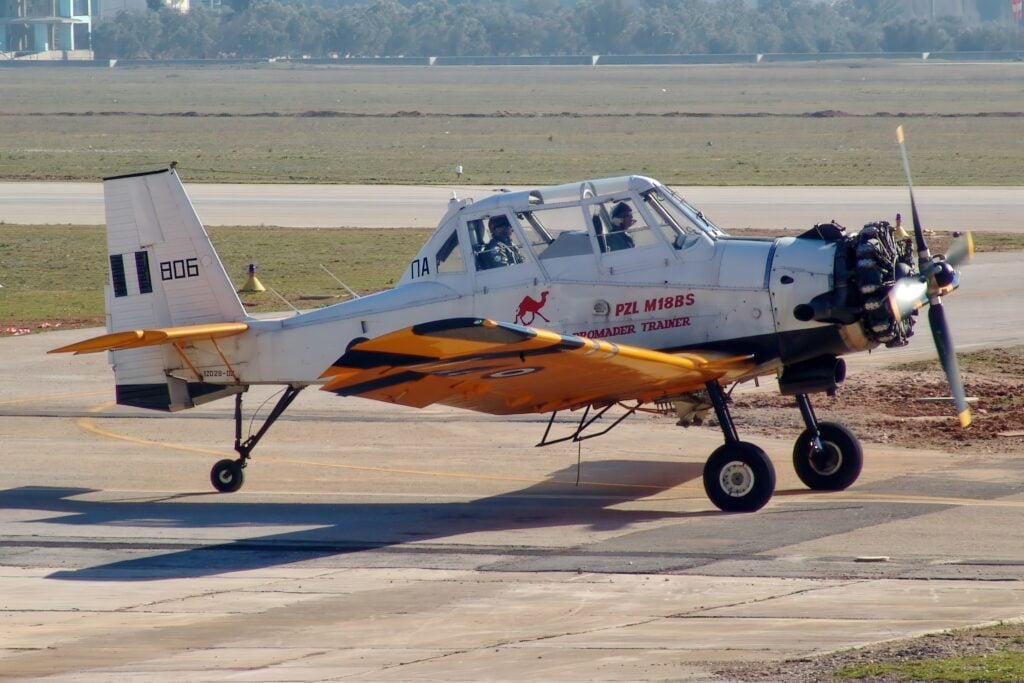
In addition to performing routine maintenance of the aircraft, the MSA has also modified all M-18Bs within the past several years. The most important modification work was to install a larger fuel tank that has increased the total amount of fuel carried by the aircraft from 415 to 720 liters, thus increasing flight endurance from 2.5 hours to 4.5 hours.
New ailerons are installed on the aircraft which can extend to a greater angle from 15 degrees to 30 degrees, making the aircraft more maneuverable. The forward visibility of the pilot during landing, taxiing, and take-off is also improved by installing a higher strut for the tailwheel. In addition to these, the brake systems and the mechanical water release hatch of the aircraft are upgraded and have become hydraulically operated. This allows controlled water release in three to 12 seconds. Also, a foam generator with a capacity of 60 liters of liquid is installed inside the water tank.
In 2005, all of the Dromaders had their hydraulic pumps and piping replaced with new ones. They also had a larger and newer oil cooler installed, making the engine more reliable during summertime. They also installed GPS receivers and provided handheld GPS integrated moving maps for the pilots.
An M-18B Dromader needs IRAN (Inspection, Repair as Necessary) after each 3,000 hours of flight hours. This takes place in the maintenance hangar of 359 MAEDY in Tatoi airfield. The aircraft is fully disassembled, and its various systems and components are inspected and, in case of detection of any defect, repaired or replaced. After that, the aircraft is assembled and then ground and air tested before delivery to the squadron.
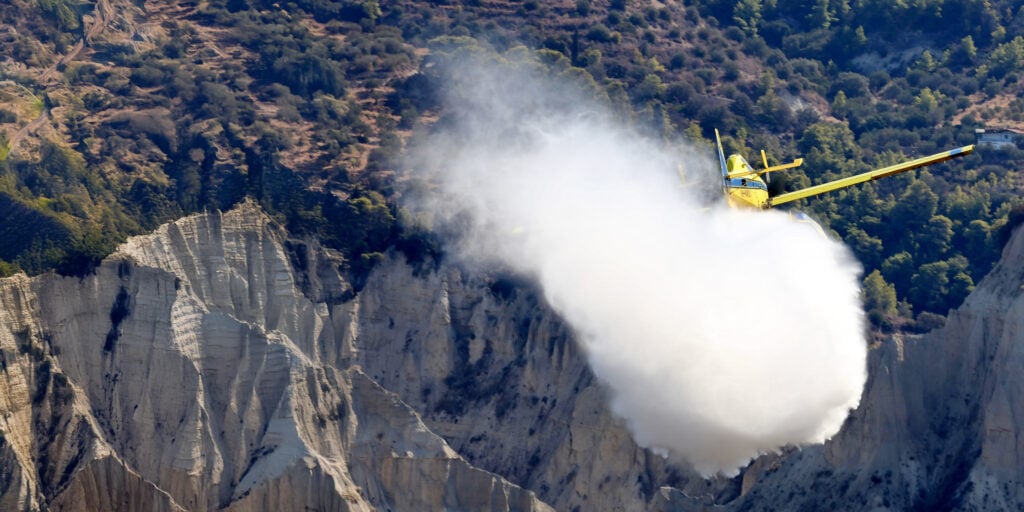
Operations During the Fire Season
During the fire season from June 1 until October 31, 359 MAEDY has 14 to 20 M-18Bs on deployment at five to seven different airfields across Greece, which are Amygdaleona Kavala, Mytilene, Corfu, Kefalonia, Lamia, Tripoli, Sparta, Epitalia Ilia, and Agrinio. These aircraft are maintained and operated by five or six different echelons, which carry out their missions completely independently from each other. Each echelon has its own mechanics who are responsible for repairing the aircraft at the deployment site without any need to redeploy them back to home base at Tatoi. Each echelon is commanded by the most senior member of that.
The Dromader echelons carry out their flights from 30 minutes before sunrise until 30 minutes after that. They are not authorized to fly at night. Their ready-to-take-off time is only 15 minutes. In fact, a Dromader pilot must be ready for flight in a maximum of ten minutes after he is assigned to perform it. The majority of this time is dedicated to performing the start-up checklist.
A significant amount of the flights of the Dromaders on deployment is for patrol flights during dangerous hours of the day. When the Dromaders are involved in patrol flights, they carry 1.5 tons of water. While another Dromader with a larger amount of water in its tank and a relatively lesser amount of fuel in its fuel tanks is on high alert (15 minutes) at the airport. An M-18B normally carries 1,500 kg of water but sometimes it increases to 2,200 kg for the aircraft which are carrying a lesser amount of fuel.
As they are trained, the Dromader pilots usually drop their water on the fire from an average altitude of only ten meters or 32 feet, making it dangerous when they are flying with a full amount of water in mountainous regions. This sometimes has caused incidents and accidents as on August 8, 2021, a Dromader M-18B with 128 serial number hit a mountain while banking during a firefighting mission near Machairado, Zakynthos.
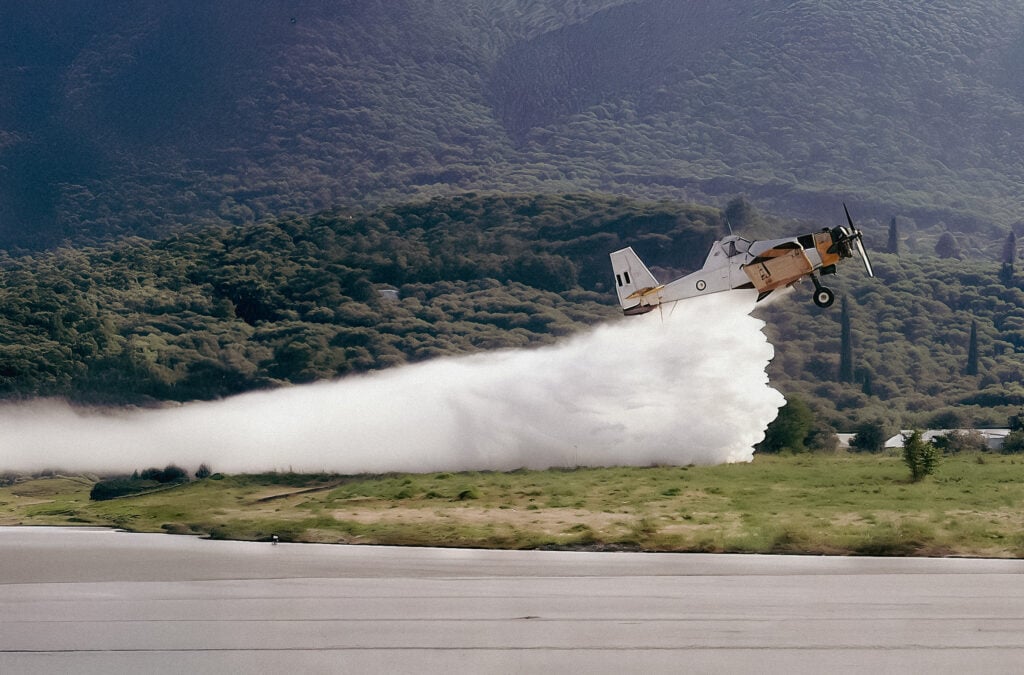
With the procurement of Air Tractor AT-802F Fire Boss amphibian firefighter aircraft, the mission capabilities of 359 MAEDY will significantly be improved. Equipped with a powerful P&W PT6A-67F turboprop engine producing 1,700 RPM with Hartzell HC-B5MP-3F/M11276NS propeller, the AT-802F has a maximum 16,000 lbs (7.257 kg) take-off weight. Thanks to that engine, it can carry a maximum 800 US gal (3.028 L) of water or fire retardant or a combination of both in addition to that it also has a maximum fuel capacity of 380 US gal (1.438 L) in its tanks. Its capability to refill water in the sea or nearby rivers will make the aircraft extremely more functional if compared with M-18B for the Hellenic Air Force.
By the end of 2027, at least 20 AT-802Fs will be in service of 359 MAEDY which will carry out the missions that are currently being carried out by the M-18Bs. When this article was written in December 2024, no official contract for AT-802F procurement had been reached; however, the AT-802F is determined to be the sole aircraft to meet the needs of the Hellenic Air Force for a firefighter aircraft. Even after their deliveries, the HAF’s 359 MAEDY is expected to continue operating M-18Bs for a few more months until 2028 or 2029.
Temporary use of Civilian Air Tractors
Equipped with piston engines and without floats for water landing and scooping to refill its tanks, the M-18B Dromaders of the HAF’s 359th MAEDY are not ideal assets for battling large fires, especially in mountainous regions. To replace the aging M-18B/BS fleet, the Greek government plans to acquire at least 20 AT-802A/Fs, all equipped with floats. Until then, the Hellenic Fire Service aims to utilize civilian AT-802A/F Fireboss aircraft operated under contract with Pay's Air Service from Australia.
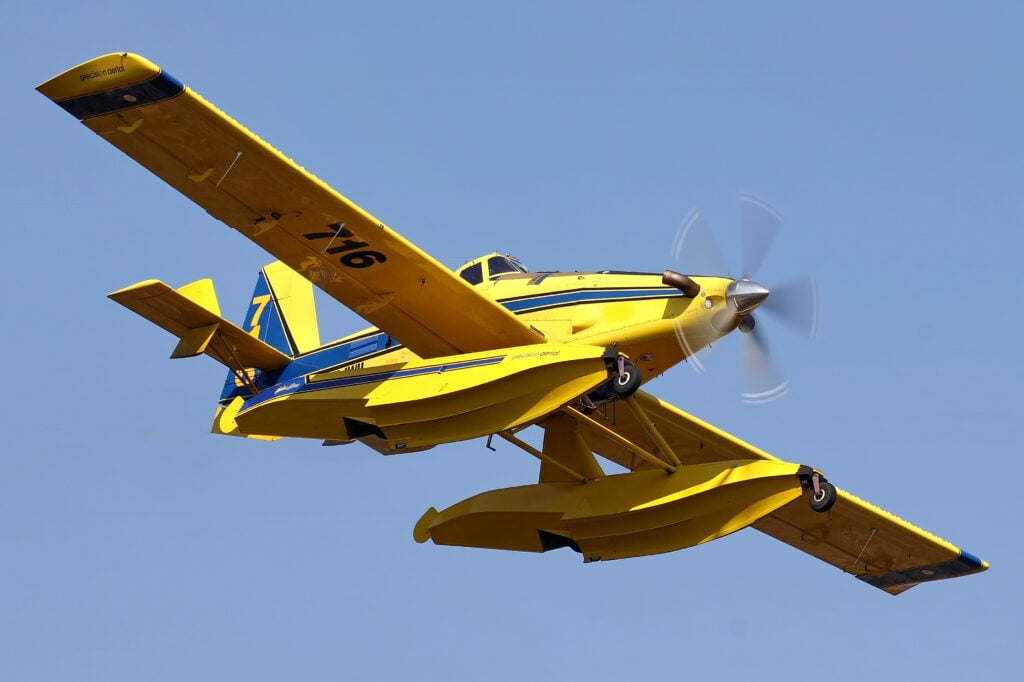
Between May 5 and 15, 2024, five single-seater AT-802As (VH-FHI/218, VH-FNA/219, VH-FBX/360, VH-IWD/716, and VH-NWU/717) and three double-seater AT-802Fs (VH-LIH/220, VH-FBY/221, and VH-AWU/718) operated by Pay’s Air Service arrived in Greece for use in this year’s fire season. They were stationed at various airfields across Greece, including Tatoi, Tripoli, and Kalamata, as well as several islands in the Aegean and Mediterranean Seas. During the massive wildfire in the Attica region in August 2024, they joined the national assets in the battle against it.
Following the wildfire in the Corinth region, specifically in the forested area in Xylokastro, which began on September 29, 2024, two of the AT-802s based in Tatoi and three others based in Kalamata were called into action. On September 30 and October 1, 2024, three additional AT-802s of Pay’s Air Service, initially deployed at Kos Island and other parts of Greece, were also relocated to Tatoi to assist in the firefighting efforts.
The AT-802s were not the only civilian aerial firefighting assets based in Greece involved in battling wildfires in the Corinth district. Erickson Incorporated deployed five of its six S-64E Sky Crane helicopters, and McDermott Aviation Group deployed eight of its ten Bell 214B-1/ST Big Lifter helicopters in Greece from the start of operations. Each company had a Bell 214 and an S-64E based at Tatoi, Tanagra, Araxos, and Kalamata airports when the forest fires broke out. On September 30 and October 1, more helicopters were moved from Thessaloniki to Elefsis to aid in the firefighting efforts.
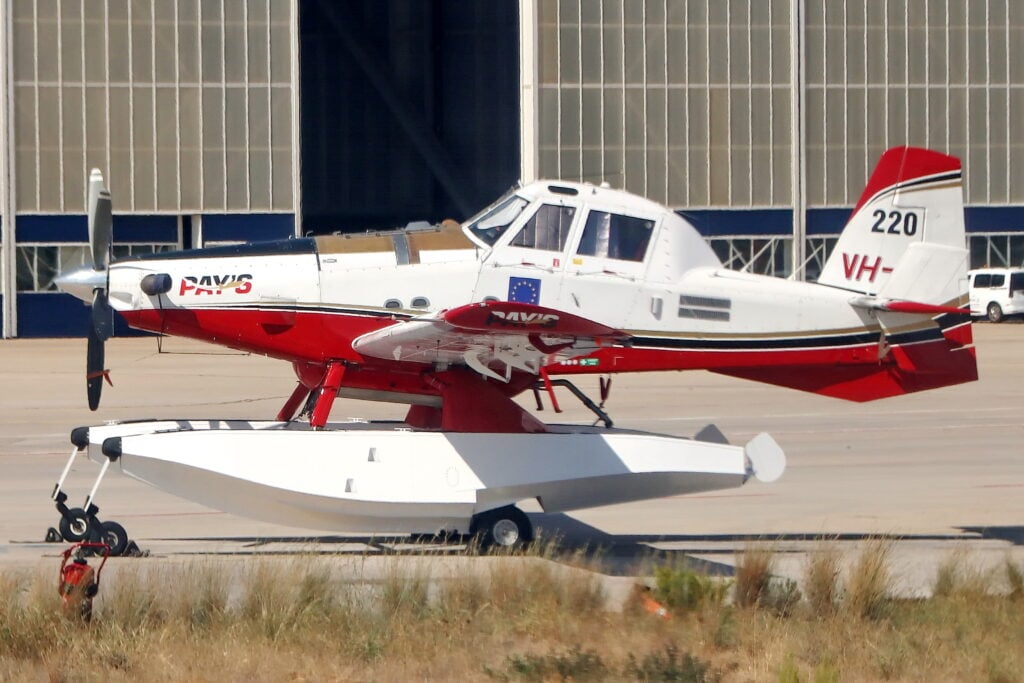
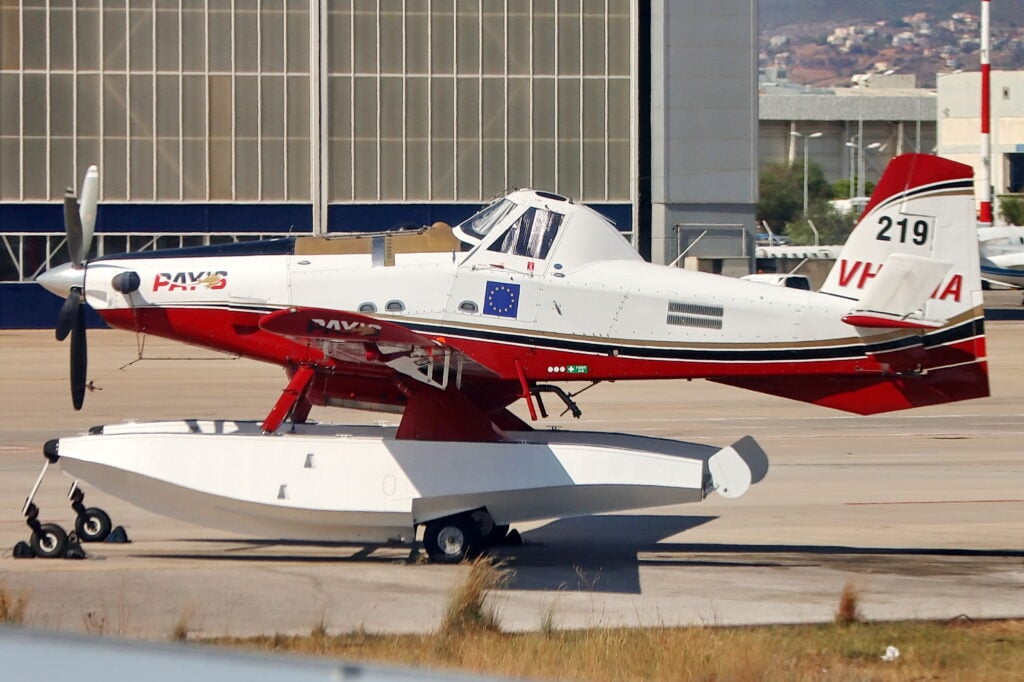
All firefighting operations were carried out under the direct supervision, control, and command of the Hellenic Fire Service. Their firefighters in the mountains or aboard a Eurocopter MBB-BK 117C-1 (SX-HFD) or a Eurocopter AS332L1 Super Puma (SX-HFF) of the Hellenic Fire Service based at Athens International Airport oversaw and directed the pilots of the firefighter aircraft and helicopters involved in the firefighting operations.
At the conclusion of the 2024 fire season, the AT-802s deployed in Greece were flown back to Australia to be used for firefighting purposes in their own country. Similar deployments of Australian AT-802s to Greece are expected to continue for at least three more years until the Hellenic Air Force has its own operational fleet of AT-802A/Fs as replacements for its aging PZL M-18B/BS Dromaders.







